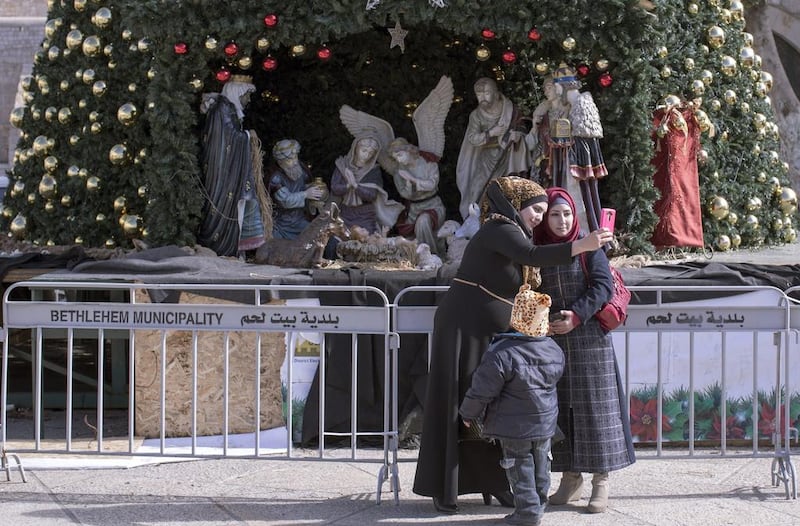There is something about Mary. Or, in this part of the world, Mariam, Miriam, Maryam or Maryoom – and they are just a few of the English spellings. In the UAE, Maryam has traditionally been the second most popular girl’s name; a close second to Fatima. The many creative ways of spelling Maryam have been encouraged by social media, where everyone needs a unique display name. Looking at the 2016 social media data for the Arab world – using multiple spellings in English and Arabic – we can see that there are at least 41,000 unique Maryams on Twitter alone; 1,600 from the UAE.
Behind the popularity, is the woman and the myth. Mentioned in the English translation of the Bible as Mary, Maryam is also the leading figure in an eponymous chapter of the Quran – she is also the only woman mentioned by name in the Islamic holy book. In fact, Maryam is more frequently mentioned in the Quran than the Bible.
Quantitative comparisons aside, Maryam/Mary is venerated and celebrated the world over by followers of both Christianity and Islam. Christian scholars have poetically referred to her as the “rose without thorns”, while within Islamic tradition Maryam is considered one of the four greatest woman of humankind. Some Muslim scholars even controversially suggest that Maryam was a prophet.
Within Christianity extreme adoration of Maryam has been called into question, with the derogatory term Mariolatry (Mary-worship) occasionally being thrown around. One example of this excessive devotion was termed Collyridianism. Collyria is Latin for a thin cake of bread, something the Collyridians are reported to have offered to Maryam within their symbolic rituals. The details of Collyridianism are pretty sketchy, it is suggested that the movement arose in pre-Islamic Arabia, comprised mostly women and was declared heretical by the Roman Catholic church based on the group’s excessive Marian devotions.
Ancient heresy aside, Maryam still seems to have a special power over the hearts and minds of millions. For instance, no other Biblical figure is so frequently associated with miracles in the modern world. Marian apparitions (seeing visions of the virgin Mary) have been reported everywhere from Guadalupe in Mexico to Kibeho in Rwanda. No fewer than seven popes have claimed to have had Marian apparitions.
In general, reports of supernatural and mysterious phenomena seem to have taken a hit in recent years. For sure, UFO sightings are at an all-time low and, just as camera-phones have become ubiquitous, the Loch Ness monster seems to have become a recluse. Despite the apparent downturn in paranormal activity, Marian apparitions are enjoying a boom. Michael O'Neill, author of Exploring the Miraculous, runs a website cataloguing and detailing every alleged Marian apparition over the past 2,000 years; the count currently stands at 2,500 with 500 of these reported in the 20th century alone. The most recent Marian apparition was reported in Atlanta, Georgia this month.
On a more mundane note, we looked at the Zayed University registration database, examining student records going back more than 15 years. The second most popular name among Zayed students when it first opened its doors in 1998 was Maryam (Fatima was first). The second most popular name 15 years later remained Maryam. Despite the UAE’s rapid social and economic development, the veneration of Maryam remains the same.
Maryam, of course, is also celebrated for the birth of her son, Isa/Jesus.
For many people, December 25 is the date that now represents the anniversary of this auspicious birth. In the Quranic version of this nativity we read: “And the pains of childbirth drove her to the trunk of a palm tree. She said, ‘Oh, I wish I had died before this and was in oblivion, forgotten.’ ” (Sura Maryam, Verse 23).
For me, the appeal of Maryam is that she represents the mother. Wise, caring and compassionate: rosa sine spina (a rose without thorns). There will always be Maryams.
Dr Justin Thomas is an associate professor at Zayed University
On Twitter: @DrJustinThomas





